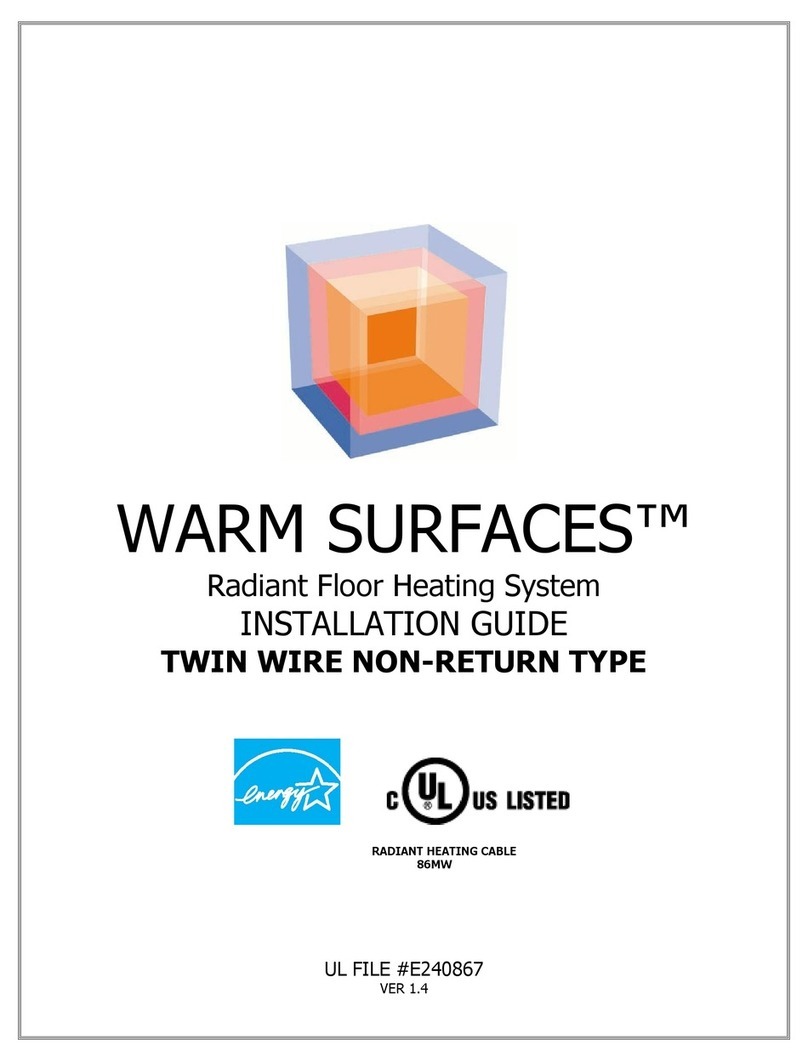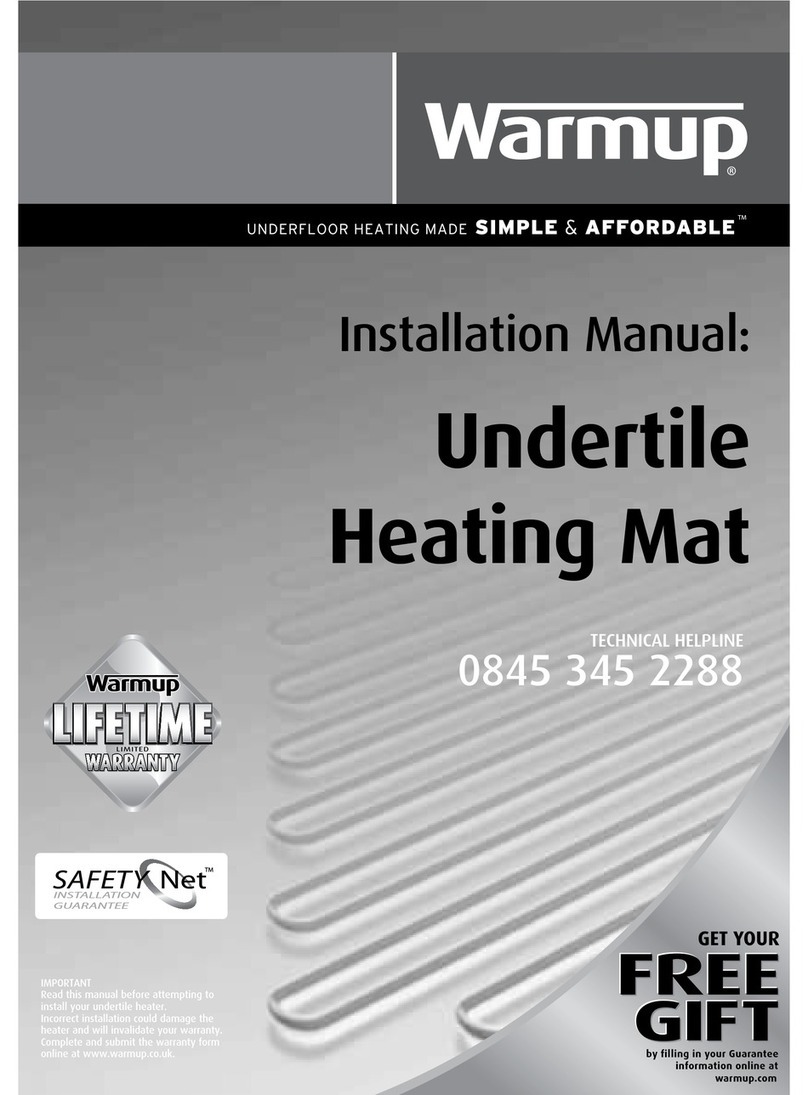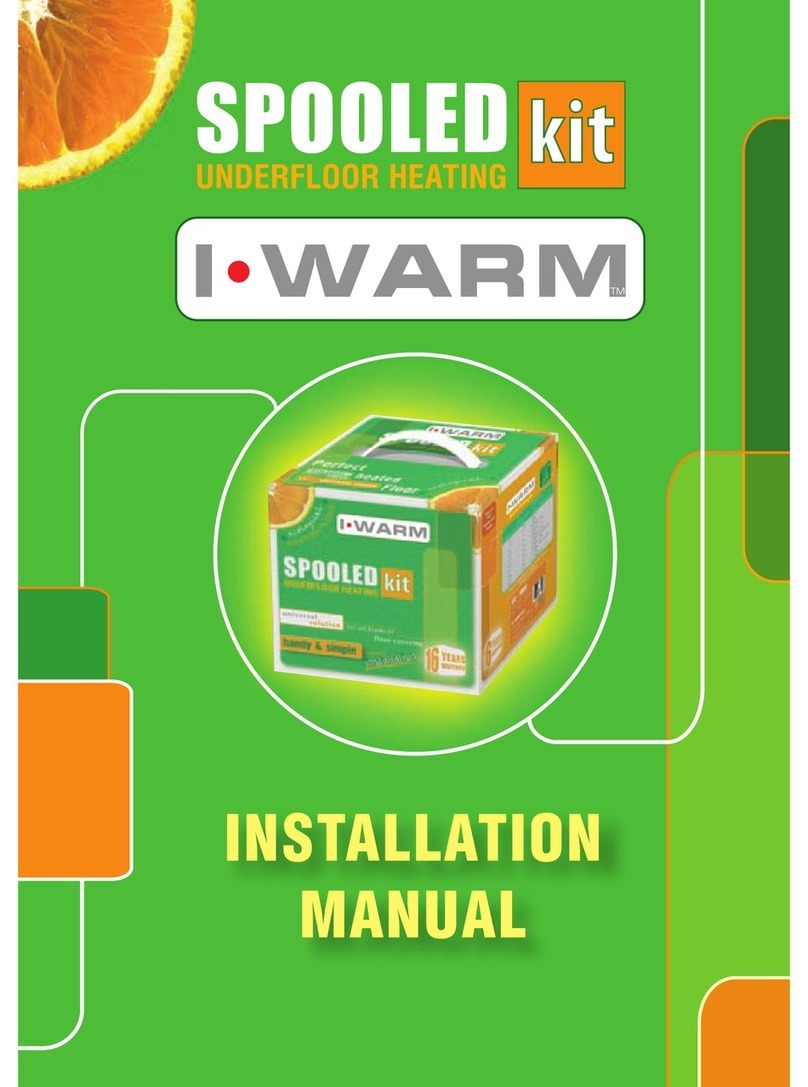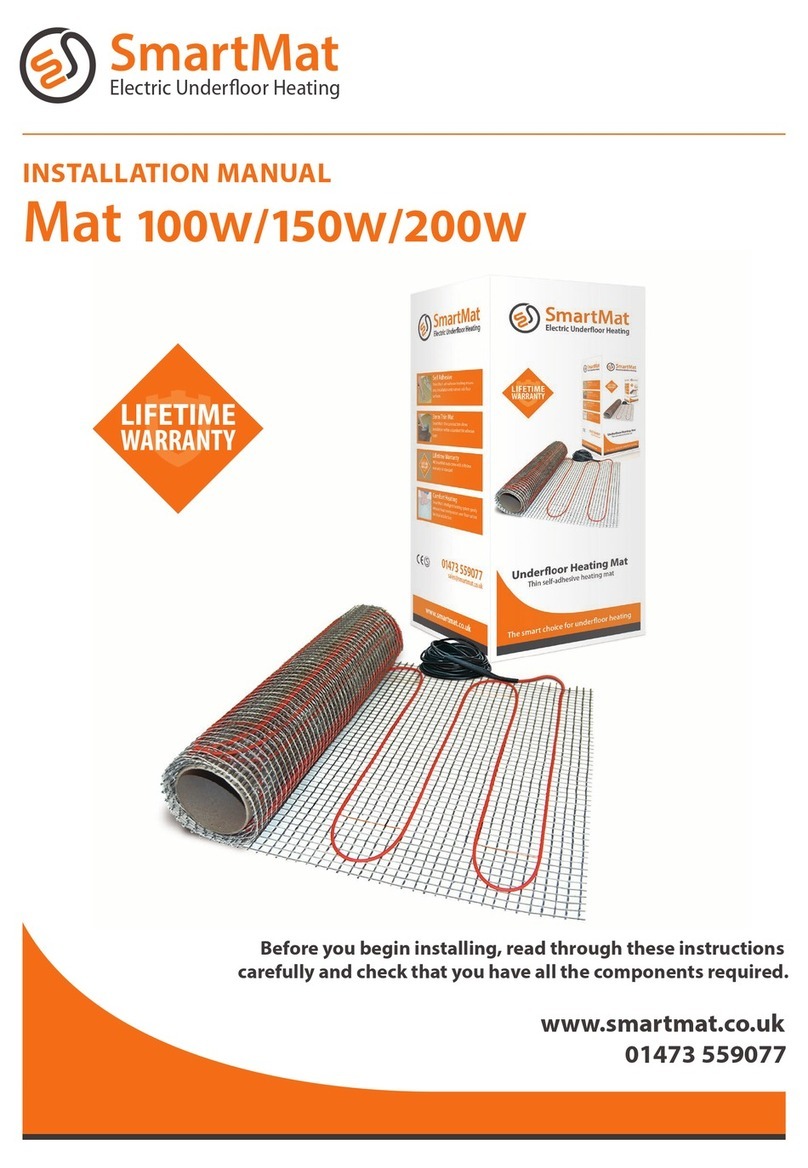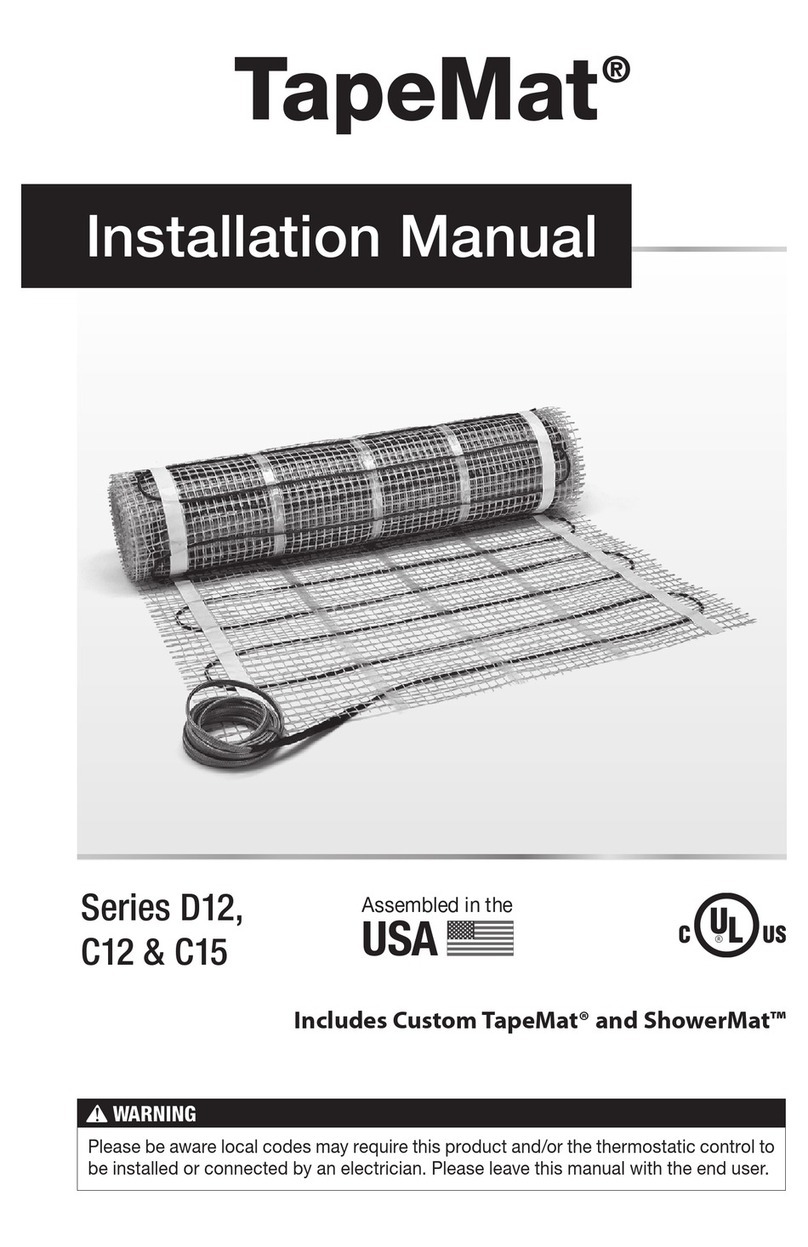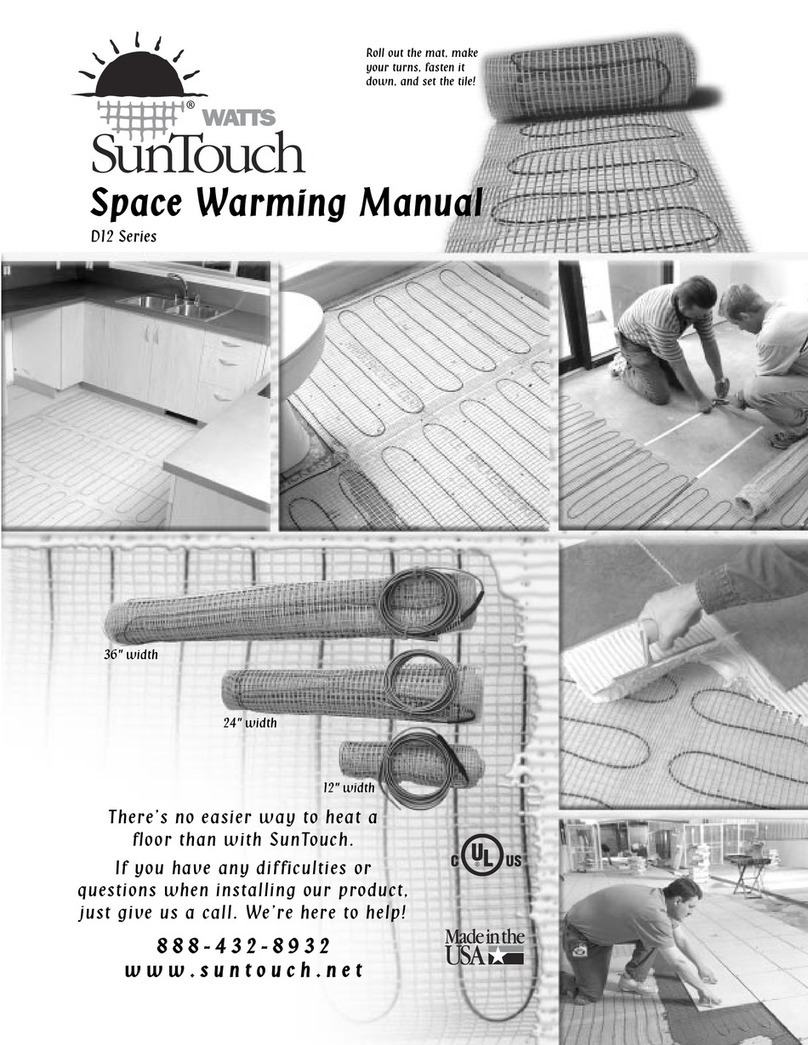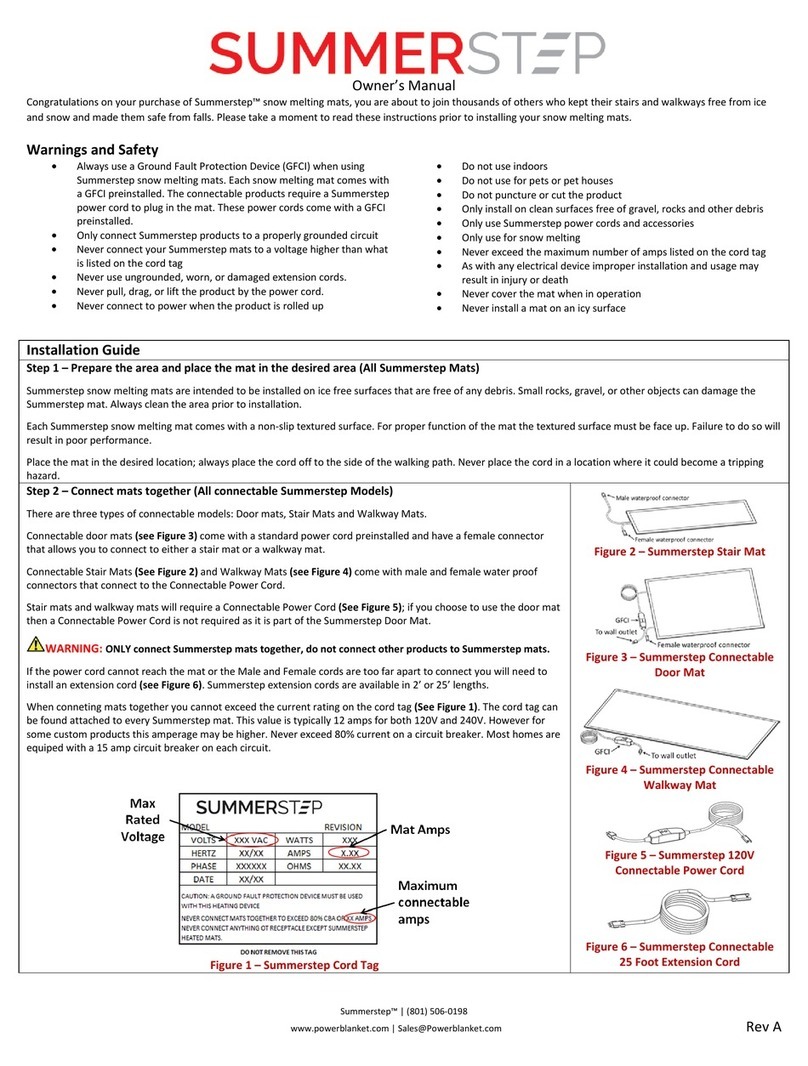10 B: APPLIED DIRECTLY ON TOP OF INSULATION:
When laying the KLIMA CABLE onto the insulation the KLIMA CABLE must be laid and
secured onto a steel mesh. Do not install the cable directly onto the insulation. The cable
is laid on to a smooth reinforcing mesh (approximately 100mm square), and secured with
tie wraps. When using insulation, the top surface of the insulation must be aluminium cov-
ered and coated appropriately to resist reaction with screed. Kingspan and Celotex man-
ufacture insulation boards for the sole purpose of underfloor heating. The cable must not
come into contact with the insulation. Contact the insulation manufacturer for compatibility
with cable floor heating systems and fitting instructions.
The minimum depth of screed is 75mm. It is very important that the bedding is applied
free of air bubbles. Air bubbles form insulating, non-conductive areas where the cable
cannot release its heat and a danger of overheating arises which can cause damage to
the cable. To avoid this first of all wetter screed must initially be used to enclose the
cable in the screed. Following this drier cement can be used for levelling the final bed-
ding. In this case a pourable liquid screed is also a good option. Protect the cables when
bringing in the cement or grout by using duckboards. Never use wheelbarrows with unpro-
tected footrests. Remember to take the resistance readings throughout this installation
process and mark opposite.
10 C: ON DOVETAILED SHEETING:
Always allow for expansion. Dovetailed subfloors offer very poor insulation. It is recom-
mended the dovetailed sheeting is insulated from below. Then fill in the grooves with mor-
tar before installing the cables. Then install as indicated in Chapter 10A. In the latter case
pourable liquid screed method can also be applied. Protect the cables when bringing in
the cement or grout by using duckboards. Never use wheelbarrows with unprotected
footrests.
11. USING THE SYSTEM FOR THE FIRST TIME:
Depending on the drying time specified for the cement or grout, however not sooner than
30 days after installation due to the natural expulsion of moisture from the floor. Turning
on the system sooner can damage the floor.
10
